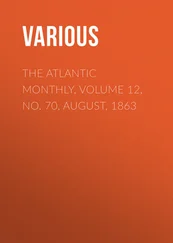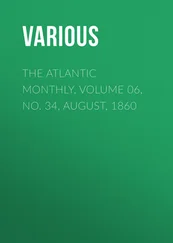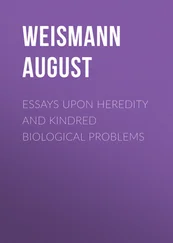August Weismann - Studies in the Theory of Descent, Volume I
Здесь есть возможность читать онлайн «August Weismann - Studies in the Theory of Descent, Volume I» — ознакомительный отрывок электронной книги совершенно бесплатно, а после прочтения отрывка купить полную версию. В некоторых случаях можно слушать аудио, скачать через торрент в формате fb2 и присутствует краткое содержание. Жанр: foreign_antique, foreign_prose, на английском языке. Описание произведения, (предисловие) а так же отзывы посетителей доступны на портале библиотеки ЛибКат.
- Название:Studies in the Theory of Descent, Volume I
- Автор:
- Жанр:
- Год:неизвестен
- ISBN:нет данных
- Рейтинг книги:4 / 5. Голосов: 1
-
Избранное:Добавить в избранное
- Отзывы:
-
Ваша оценка:
- 80
- 1
- 2
- 3
- 4
- 5
Studies in the Theory of Descent, Volume I: краткое содержание, описание и аннотация
Предлагаем к чтению аннотацию, описание, краткое содержание или предисловие (зависит от того, что написал сам автор книги «Studies in the Theory of Descent, Volume I»). Если вы не нашли необходимую информацию о книге — напишите в комментариях, мы постараемся отыскать её.
Studies in the Theory of Descent, Volume I — читать онлайн ознакомительный отрывок
Ниже представлен текст книги, разбитый по страницам. Система сохранения места последней прочитанной страницы, позволяет с удобством читать онлайн бесплатно книгу «Studies in the Theory of Descent, Volume I», без необходимости каждый раз заново искать на чём Вы остановились. Поставьте закладку, и сможете в любой момент перейти на страницу, на которой закончили чтение.
Интервал:
Закладка:
It is true that we have as yet no kind of insight into the nature of heredity, and this at once shows the defectiveness of the foregoing explanation; but we nevertheless know many of its external phenomena. We know for certain that one of these consists in the fact that peculiarities of the father do not appear in the son, but in the grandson, or still further on, and that they may be thus transmitted in a latent form. Let us imagine a character so transmitted that it appears in the first, third, and fifth generations, remaining latent in the intermediate ones; it would not be improbable, according to previous experiences, that the peculiarity should exceptionally, i.e., from a cause unknown to us, appear in single individuals of the second or fourth generation. But this completely agrees with those cases in which “exceptional” individuals of the winter brood took the Prorsa form, with the difference only that a cause (warmth) was here apparent which occasioned the development of the latent characters, although we are not in a position to say in what manner heat produces this action. These exceptions to the rule are therefore no objection to the theory. On the contrary, they give us a hint that after one Prorsa generation had been produced, the gradual interpolation of a second Prorsa generation may have been facilitated by the existence of the first. I do not doubt that even in the natural state single individuals of Prorsa sometimes emerge in September or October; and if our summer were lengthened by only one or two months this might give rise to a third summer brood (just as a second is now an accomplished fact), under which circumstances they would not only emerge, but would also have time for copulation and for depositing eggs, the larvæ from which would have time to grow up.
A sharp distinction must be made between the first establishment of a new climatic form and the transference of the latter to newly interpolated generations. The former always takes place very slowly; the latter may occur in a shorter time.
With regard to the duration of time which is necessary to produce a new form by the influence of climate, or to transmit to a succeeding generation a new form already established, great differences occur, according to the physical nature of the species and of the individual. The experiments with Prorsa already described show how diverse are individual proclivities in this respect. In Experiment No. 12 it was not possible out of seventy individuals to substitute Prorsa for the Levana form, even in one solitary case, or, in other words, to change alternating into continuous inheritance; whilst in the corresponding experiments of former years (Experiment 10, for example), out of an equal number of pupæ three emerged as Prorsa , and one as Porima . We might be inclined to seek for the cause of this different behaviour in external influences, but we should not thus arrive at an explanation of the facts. We might suppose, for instance, that a great deal depended upon the particular period of the pupal stage at which the action of the elevated temperature began – whether on the first, the thirtieth, or the hundredth day after pupation – and this conjecture is correct in so far that in the two last cases warmth can have no further influence than that of somewhat accelerating the emergence of the butterflies, but cannot change the Levana into the Prorsa form. I have repeatedly exposed a large number of Levana pupæ of the third generation to the temperature of an apartment, or even still higher (26° R.), during winter, but no Prorsa were obtained. 19
But it would be erroneous to assume a difference in the action of heat according as it began on the first or third day after transformation; whether during or before pupation. This is best proved by Experiment No. 12, in which caterpillars of the fourth generation were placed in the hothouse several days before they underwent pupation; still, not a single butterfly assumed the Prorsa form. I have also frequently made the reverse experiment, and exposed caterpillars of the first summer brood to cold during the act of pupation. A regular consequence was the dying off of the caterpillars, which is little to be wondered at, as the sensitiveness of insects during ecdysis is well known, and transformation into the pupal state is attended by much deeper changes.
Dorfmeister thought that he might conclude from his experiments that temperature exerts the greatest influence in the first place during the act of pupation, and in the next place immediately after that period. His experiments were made, however, with such a small number of specimens that scarcely any safe conclusion can be founded on them; still, this conclusion may be correct, in so far as everything depends on whether, from the beginning, the formative processes in the pupa tended to this or that direction, the final result of which is the Prorsa or Levana form. If once there is a tendency to one or the other direction, then temperature might exert an accelerating or a retarding influence, but the tendency cannot be further changed.
It is also possible – indeed, probable – that a period may be fixed in which warmth or cold might be able to divert the original direction of development most easily; and this is the next problem to be attacked, the answer to which, now that the main points have been determined, should not be very difficult. I have often contemplated taking the experiments in hand myself, but have abandoned them, because my materials did not appear to me sufficiently extensive, and in all such experiments nothing is to be more avoided than a frittering away of experimental materials by a too complicated form of problem.
There may indeed be a period most favourable for the action of temperature during the first days of the pupal stage; it appears from Experiment No. 12 that individuals tend in different degrees to respond to such influences, and that the disposition to abandon the ordinary course of development is different in different individuals. In no other way can it be explained that, in all the experiments made with the first and second generations of Prorsa , only a portion of the pupæ were compelled by cold to take the direction of development of Levana , and that even from the former only a few individuals completely reverted, the majority remaining intermediate.
If it be asked why in the corresponding experiments with Pieris Napi complete reversion always occurred without exception, it may be supposed that in this species the summer form has not been so long in existence, and that it would thus be more easily abandoned; or, that the difference between the two generations has not become so distinct, which further signifies that here again the summer form is of later origin. It might also be finally answered, that the tendency to reversion in different species may vary just as much as in different individuals of the same species. But, in any case, the fact is established that all individuals are impelled by cold to complete reversion, and that in these experiments it does not depend so particularly upon the moment of development when cold is applied, but that differences of individual constitution are much more the cause why cold brings some pupæ to complete, and others to partial, reversion, while yet others are quite uninfluenced. In reference to this, the American Papilio Ajax is particularly interesting.
This butterfly, which is somewhat similar to the European P. Podalirius , appears, wherever it occurs, in three varieties, designated as var. Telamonides , var. Walshii , and var. Marcellus . The distinguished American entomologist, W. H. Edwards, has proved by breeding experiments, that all three forms belong to the same cycle of development, and in such a manner that the first two appear only in spring, and always come only from hibernating pupæ, while the last form, var. Marcellus , appears only in summer, and then in three successive generations. A seasonal dimorphism thus appears which is combined with ordinary dimorphism, winter and summer forms alternating with each other; but the first appears itself in two forms or varieties, vars. Telamonides and Walshii . If for the present we disregard this complication, and consider these two winter forms as one, we should thus have four generations, of which the first possesses the winter form, and the three succeeding ones have, on the other hand, the summer form, var. Marcellus .
Читать дальшеИнтервал:
Закладка:
Похожие книги на «Studies in the Theory of Descent, Volume I»
Представляем Вашему вниманию похожие книги на «Studies in the Theory of Descent, Volume I» списком для выбора. Мы отобрали схожую по названию и смыслу литературу в надежде предоставить читателям больше вариантов отыскать новые, интересные, ещё непрочитанные произведения.
Обсуждение, отзывы о книге «Studies in the Theory of Descent, Volume I» и просто собственные мнения читателей. Оставьте ваши комментарии, напишите, что Вы думаете о произведении, его смысле или главных героях. Укажите что конкретно понравилось, а что нет, и почему Вы так считаете.












